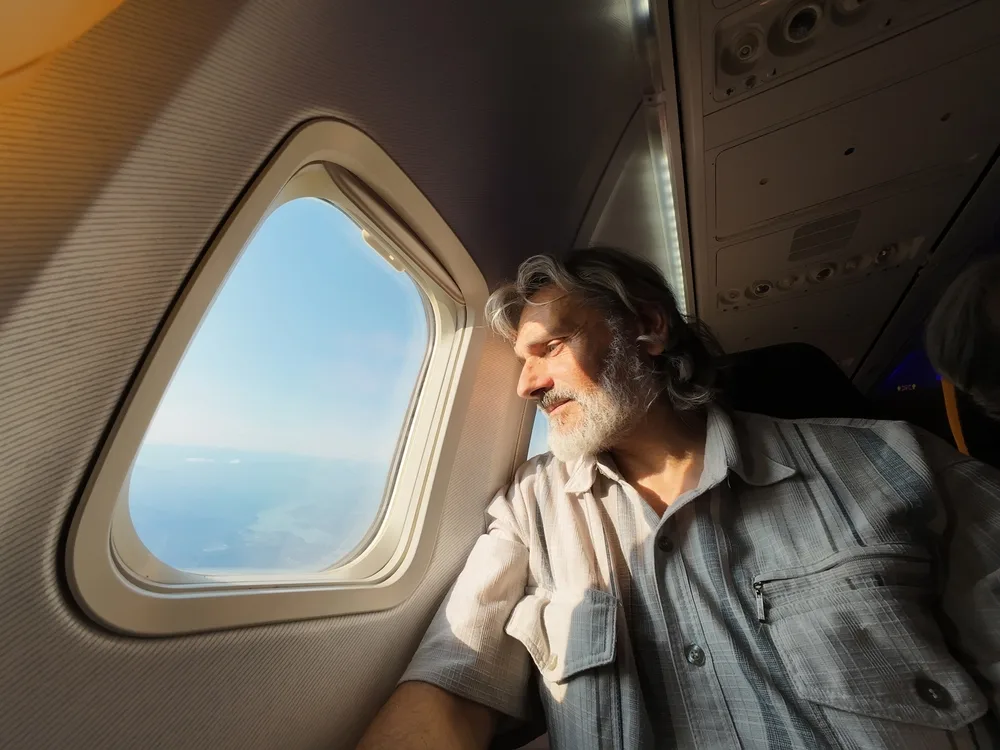11 long-haul travel tips to arrive rested, not wrecked
Heading overseas from Australia often means facing a long-haul flight – sometimes 20 hours or more. Bound for Europe, the USA or beyond? These journeys can be tough on your body – and your patience.

11 long-haul travel tips to arrive rested, not wrecked
Heading overseas from Australia often means facing a long-haul flight – sometimes 20 hours or more. Bound for Europe, the USA or beyond? These journeys can be tough on your body – and your patience. But with a little preparation, long-haul travel doesn’t have to be a struggle.
From booking smart to beating jet lag, here are our top tips to help you stay comfortable, healthy and prepared – from take-off to touch-down.
11 Tips for surviving long-haul flights from Australia
1. Choose your seat wisely
A good seat can make a big difference on a long flight. If you want to avoid feeling cramped or boxed in:
- Book early to access better seat options
- Use airline seat maps or sites like SeatGuru to find the best spots
- Aisle seats offer easy access to the bathroom and a bit more space to stretch
- Exit row and bulkhead seats provide extra legroom – but they can be near high-traffic areas
If your budget allows, upgrading to Economy Plus or Premium Economy can be a game changer, especially when it comes to comfort and sleep quality.
Getting through the airport smoothly is half the battle — check out these airport tips and common travel mistakes to avoid before your next long-haul flight.
2. Dress for the journey
Cabin environments can get chilly or stuffy, and your body may swell slightly at altitude. Comfort is key, so make sure you:
- Wear soft, loose layers that you can easily add or remove
- Avoid tight waistbands and heavy fabrics that restrict movement
- Bring compression socks to boost circulation and help prevent swelling or deep vein thrombosis (DVT)
- Pack a light scarf or wrap – it can double as a blanket or pillow
3. Stay hydrated
Aircraft cabins have low humidity levels – which can leave you dehydrated and feeling groggy.
- Bring a refillable water bottle and fill it after security, or ask the crew to top it up during the flight
- Drink water regularly – not just with meals
- Go easy on alcohol and caffeine – both can dehydrate you
- Use lip balm and moisturiser to help keep your skin hydrated
4. Move Often and Stretch
Sitting in one position for long periods isn’t great for circulation – or comfort. Make an effort to move regularly throughout the flight.
- Walk the aisles every couple of hours, if space allows
- Do simple in-seat stretches – rotate your ankles, roll your shoulders, and flex your legs
- Stand and stretch in the galley (when permitted by the crew)
Staying active helps reduce stiffness and lowers the risk of deep vein thrombosis (DVT), especially on flights over 8 hours.
5. Prioritise sleep
Getting quality sleep can make a long flight feel shorter – and help you recover faster when you land.
- Pack sleep essentials – a neck pillow, eye mask, and noise-cancelling headphones or earplugs
- Adjust to your destination’s time zone if you can (more on that below)
- Avoid heavy meals and screens right before trying to sleep
- If you use melatonin or sleep aids, check with your GP first – and trial them before your trip
6. Pack a carry-on essentials kit
Being prepared can help you stay comfortable, fresh and relaxed during the flight.
What to pack:
- Travel-sized toiletries – toothbrush, toothpaste, face wipes
- Lip balm and hand cream – to combat dry cabin air
- Snacks – protein bars, dried fruit or crackers
- Headphones and a spare charger – in case your in-flight set isn’t up to scratch
- Entertainment – a good book, offline shows or a podcast playlist
Some airlines offer amenity kits – but bringing your own means you’ll stay comfortable no matter who you fly with.
7. Eat light and time your meals
Heavy or greasy meals can leave you feeling bloated and uncomfortable at 30,000 feet.
- Choose lighter, balanced options when they’re available
- Try to eat in line with your destination’s local time – it can help your body clock adjust earlier
- Bring your own snacks if you have dietary needs or prefer healthier options
Staying mindful of what and when you eat can make a big difference to your comfort – and your jet lag recovery.
8. Adjust to new time zone
Jet lag is a real challenge when flying from Australia to Europe or North America – but a few simple steps can help ease the transition:
- Change your watch or phone clock to your destination’s time as soon as you board
- Sleep and eat in line with the new time zone, even while you’re still in the air
- Get sunlight exposure during the day after landing – and avoid napping too early
- Stay hydrated and skip the alcohol until your body has adjusted.
Taking the time to reset your internal clock early can help you feel more human – and enjoy your trip from day one.
9. Consider a stopover
Breaking up a very long trip can make a world of difference. Many Australians choose stopovers in places like Singapore, Dubai, Doha or Bangkok.
- Spend 1–2 nights resting and recharging
- Explore a new city – or just relax in a hotel and catch up on sleep
- Check for airline stopover offers – some include free hotel stays or short tours
It turns one long-haul journey into two manageable legs – and adds a bonus travel experience along the way.
Planning a stopover can ease the strain of long-haul travel — and these tips for booking your holiday online safely and efficiently will help you secure the best deals.
10. Back up important documents
When travelling long-haul, especially internationally, having quick access to key documents can save you major stress.
- Print hard copies of your passport, Travel Insurance policy, itinerary and hotel confirmations
- Store digital copies in cloud storage (like Google Drive or Dropbox) – or email them to yourself
- Keep a photo of your passport ID page on your phone in case it’s lost or stolen
- Use a small folder or travel wallet to stay organised during the flight and after you arrive
Having backups at your fingertips can help you avoid panic in the event of lost baggage, missed connections or emergencies – and makes your trip feel that much smoother.
11. Don’t forget Travel Insurance
When you’re travelling far from home, Travel Insurance isn’t just a nice-to-have – it’s essential. A good policy can cover you for:
- Unexpected cancellations
- Lost or delayed baggage
- Emergency medical treatment
- Flight delays
Make sure your policy covers long-haul travel and includes any pre-existing medical conditions. It’s also a good idea to check the latest government travel advice before you fly, just to be safe.
Find out the best time to buy Travel Insurance for your trip to make sure you’re covered early.
Arrive ready, not run down
Long-haul flights are just part of the journey for many of us, but they don’t have to be uncomfortable. With a bit of planning and the right gear, you can arrive feeling rested and ready to explore.
So whether you’re flying to London, Los Angeles or Lisbon, follow these long-haul travel tips to make the most of every moment – both in the air and on the ground.
Related Posts
Get expert takes on travel trends, safety updates, and destination news to make smarter travel decisions.
%201.svg)


.webp)
